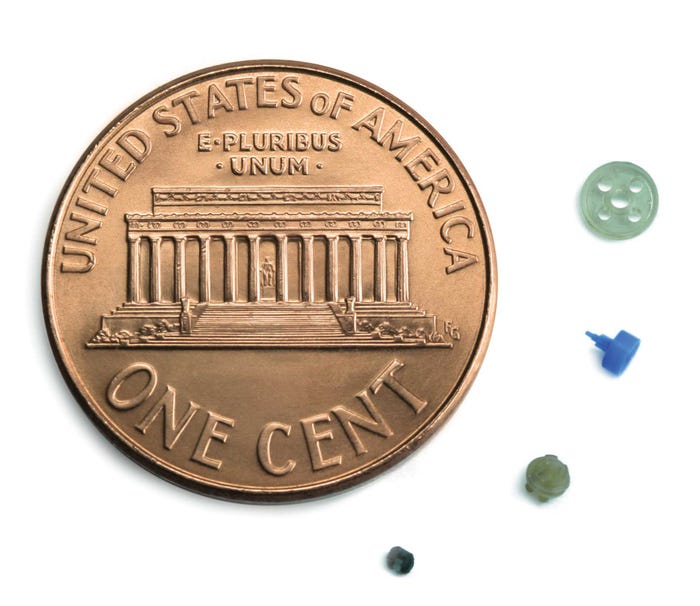November 18, 2010
|
SMC offers 10 tips to OEMs that require micromolding of parts. |
As everyone in the medical device industry knows, miniaturization is the future. Devices, parts, and feature sizes are rapidly shrinking in order to increase a product's functionality while maintaining or reducing package size, to facilitate portability for point-of-care diagnostics, and to improve patient acceptance and comfort. But achieving these tiny parts presents new challenges, especially in manufacturing.
Avoiding these pitfalls associated with micromanufacturing--specifically micromolding--was the subject of a presentation at BIOMEDevice San Jose recently given by Pat Kavanaugh of SMC Ltd. (Somerset, WI). In his presentation, Kavanaugh provided 10 tips to help medical device OEMs better understand the micromolding process. Below are Kavanaugh's helpful tips:
Micro vs. miniature vs. small parts: What's the difference? Definitions of what exactly constitutes a micro part, as opposed to a miniature part, remain hazy. While the debate rages on, SMC recommends micromolding for parts requiring tight tolerances and special materials.
Oversize to understand. Budgeting a feasibility phase in which the part size is increased can help to ensure that a design is manufacturable and ultimately save money in the long run by avoiding costly reworks and redesigns.
Materials make a difference. Not only do materials contribute significantly to costs, but their properties are critical to understand and keep in mind. For example, Kavanaugh points to the fact that bioresorbable materials have a limited shelf life.
Throw away traditional tooling preconceptions. Tooling is key to micromolding and can differ significantly from 'macro' tooling. Thus, tooling often needs to be custom developed.
Part design: Details matter. Again, design for manufacturability is a major concern when dealing with microsize parts and features. Slight modifications can often have a major impact on the manufacturability of a part.
No part is too small. But...Although a supplier might be willing to tackle the project, the reality is that building the small tooling to accommodate extremely tiny features or designs may be difficult, according to Kavanaugh. He adds that such factors as how the part will be inspected, degated, handled, packaged, and shipped should also be taken into account.
Even though you can make it, you still need to qualify it. How to validate a micro process and what is done with the results are important aspects to consider, Kavanaugh says. "How to measure it is one of the toughest things right now," he adds. He cites the difficulty of measuring the inside of microsize holes as a prime example.
Rethink early-phase development. Because of the complexity of the process and the precision required, micromolding vendors should be involved as early in the process as possible, even during R&D.
Micro technology is one piece of the whole puzzle. SMC reminds OEMs to keep the big picture in mind; it's critical not to lose sight of how the micropart will interface with the end device or how assembly will be performed.
Don't forget packaging. Handling and packaging such small parts can come with their own obstacles, so don't lose sight of them.
You May Also Like

